Meet Microcosm, Episode Two–Tell us! Tell us! The E. Chris Lynch interview!
For this installment of Meet Microcosm we talk to E. Chris Lynch about his animal sanctuary, turds covered in veganaise, and the nightmare of tabling zines on the Warped Tour.
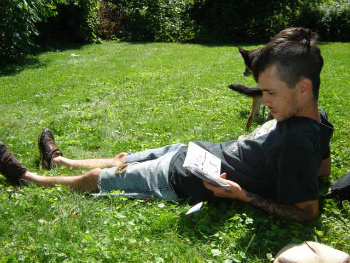
Q: Alright dude, let’s talk Deep Roots. For the unknowing reader, what’s the sanctuary all about? Tell us! Tell us!
A: The short answer: We are a sanctuary that focuses on animal and earth liberation. We also like to point out that humans are animals, too. We don’t care to fight for welfare (exploitation and killing are still exploitation and killing, even if the aesthetic and language are more appealing). And while we will work on animal rights issues in the form of legislation, ultimately we believe that rights dictated from an authoritarian body are not the equivalent of freedom. We need total liberation. A lofty goal, but we’re in it in the long run. In the meantime, we provide housing for survivors of animal exploitation (farm, lab, and domestic animals). These animals work at the sanctuary by serving as ambassadors of their species. We’ve found that once you meet animals like Mabel the chicken and you’ve seen what great personalities they have, it is a lot harder to justify killing them for our own selfish purposes.
Q: You do a lot of really cool events and feeds to support Deep Roots. Tell us!
A: The small group of us that run Deep Roots are all really dedicated to grassroots activism and that means staying close to our community. For that reason, we like to host lots of small fundraisers and community events. We have fairly regular vegan diners, where you can get diner food for $1 an item. We sometimes do themed diners. One that we’ve been trying to find a location for the past couple of months is a Twin Peaks themed diner. It will be a late night diner that only serves food found on Twin Peaks (mostly coffee and stacked donuts). Matt Gauck donated some awesome Laura Palmer patches that he made. We are really looking forward to that one.
We’ve had a couple of punk olympics–these are different each year, but events have included a soapbox derby, four-square tournament, downhill sack races, kickball tournament, 20-person tug-of-war, and other fun stuff. We always give out handmade trophies at the olympics. I think that’s my favorite part (the trophies have things like lions giving piggyback rides to bears or skulls with glowing eyes. Jerico is a trophy making champion.) We try to keep it fun. Activism should be fun and community building.
Q: Tell us, tell us… how would someone go about getting an animal to you guys? Also, tell us a little about the animals you’ve got right now. Bonus points for cute Osil stories. For that matter, tell us about Osil…
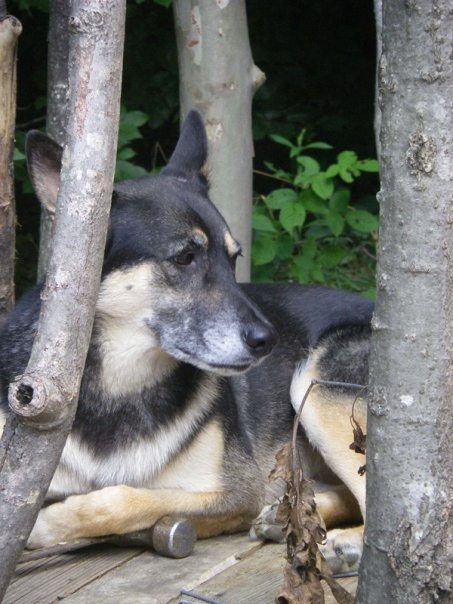
A: Ah, yes. Osil is very cute. But let me get to your first question.
We don’t take drop offs. Although we have been around for a couple of years, we have a limited budget (and a very large mortgage), so our building process is slow and we have limited space. For that reason, we ask that people email info@deeprootssanctuary.org or call 812-NOW-2-ACT and let us know the details of the animal(s) that you want to drop off. We want to know what type of animal, how many, and what situation they are coming from (factory farm, small farm, lab, puppy mill, hoarder, etc). We need to make sure that we have the space and the funds to properly care the animals. If we aren’t able to take them, we can help find someone who can.
As for stories, I’ve got lots. Everyone loves Mabel, so I’ll share a funny story about her and a bunch of pit bull puppies that were rescued from a dog fighting ring. The five puppies were a couple of months old and full of piss and vinegar. They were chasing each other around the yard while Tidbit (the oldest dog at the sanctuary) was walking around making sure they didn’t hurt each other. Mabel’s friend Harold had recently died so she was spending a lot more time around the dogs (who are terrified of her, by the way). So Mabel was walking around with Tidbit when all the puppies decided it would be fun to tackle her. Mabel didn’t like this idea so she decided to go somewhere that they puppies couldn’t reach. So she jumped on Tidbit’s back. I wish I had a picture of Tidbit’s face. She looked so worried. It was hilarious. The puppies got distracted and Mabel jumped back down, but I was in stitches.

Osil is extra special to me because she was my inspiration for starting the sanctuary. I found her while spending a couple of months down in Chiapas. It was sunrise on my birthday and I was up early. I heard a yipping sound sound in the distance. I assumed one of the puppies that had been brought to us a few days before had wondered off and was lost. Being one who always responds to a distress call, I followed the yipping. I found a four-week-old Osil sitting in a ditch, covered in mud, and yipping at two turkeys. The Chiapanecos in the small village told us that they could not care for the puppies (who were strays from the woods… their mother is a sad story that I won’t share). So my friend and I decided that we would care for them for the remaining month that we were there and then take them back to the states. On our trip in to San Cristobal to get them some dewormer and formula, Osil peed in my lap. She was so embarrassed that she hid in my armpit for the rest of the trip. It was at that moment that I fell in love. There are lots of other fun stories about getting Osil back to the states, but I’ll save those. Damnit. Now I’m just thinking of lots of cute animal stories.
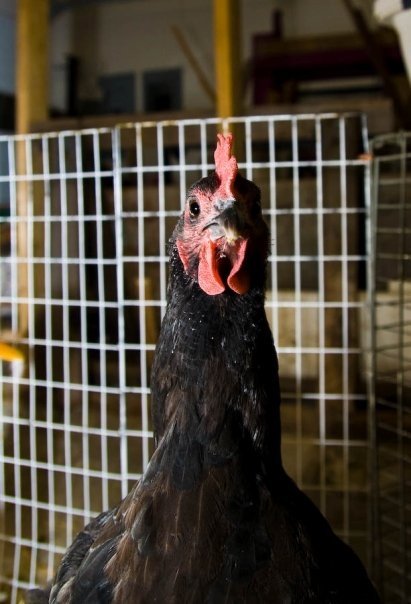
As for other animals at the sanctuary, we have several cats (about half of which came from a shelter that was shut down for hoarding), Mabel the chicken, Baron the bunny, Tom the (blind) turtle, Osil, and Tidbit (the dogs). We are finishing up a waterfowl rehab center in the next month and we are starting construction on a small barn this Spring/Summer. So we will hopefully be taking on a lot more animals this year, including our introduction into the world of wild animal rehab and release. This will be a big year for us. It is like we are growing up into our big boy pants.
Tell us, tell us–Fill in the blank!
1. I’d rather eat (blank) than a big, pink, fat-drippin’ Easter ham.
A: Well, I’ve been quoted before as saying I would eat a turd if you covered it in veganaise. So I’ll go with that. A turd covered in veganaise.
2. If a wise, kindly, snowy-bearded wizard with crystal eyes showed up right now and was like, “Bro, you got your wish. I’m totally turning you into (blank, animal) right now” which animal would you choose to be?
A: First off, I would probably piss myself if I saw someone dropping such mad wizbombs. But I might go with vulture. I had the privilege of rehabbing a couple of vultures and they are fucking cool. Huge, badass birds that look a lot like skeksies. They can fly really high. They eat things that were already dead. And they are so ugly that nobody fucks with them or thinks, “awww, that’d make a good pet.” Oh, and their defense mechanism is to puke on you. Trust me, it is the foulest smelling vomit that you have ever smelled. And they warn you that they are going to puke on you by making a hissing noise that seriously sounds like they are sucking out your soul. They are the most metal animal ever.
3. My favorite vegan food is (blank). My favorite vegan food to cook is (blank).
A: I hate this question. It is so hard for me to choose. But I’ll go with a good vegan yellow thai curry with tofu and veggies. My favorite vegan food to cook is either donuts or chocolate cake with peanut butter frosting. I make both of those quite a bit.
4. (blank) is a total animal rights superstar.
Peter Young. I still love his “apology” that he delivered to the court at his sentencing
5. You really need to read this (blank, book).
A: The Lifelong Activist by Hillary Rettig. I don’t agree with everything in the book, but I do think it made me a better organizer. And it helped me in a time when I was starting to feel powerless and burnt out. I’ve been reading All The Power by Mark Anderson. That one is really good, too, if you are feeling frustrated as an organizer. I also highly recommend Cavalier and Klay by Michael Chabon. That one doesn’t really have a lot of social import, but it is so good. Especially if you are a comics nerd. And if you haven’t read Watership Down, stop reading this stupid interview and go read that instead. Then come back and finish. If you aren’t already vegan, my partner says that Eating Animals by Jonathan Safran Foer is a good one. I’ve been vegan for 13 years now, so I don’t really read many animal rights or animal lib books any more. Maybe I should.
Q: You went on Warped Tour for Microcosm. We hear it went really badly. Tell us about it…
A: I wrote a 3,000 word “summary” of all the things that went wrong at Warped Tour. I was asked by Staples (former Microcosm intern and Australian zinester rockstar) to write a shorter summary. I’m working on it. Look for his new zine, it will be in there. Right now, I like to focus on the things that went well and the things that could have gone well. If it weren’t for a vehicle that broke down every day, that trip would have been a lot of fun. Just Adam, me, and Osil. My favorite time on the trip were those few days that the tour went into Canada and we couldn’t. So we set up camp at a rest stop in the Poconos and wrote for two days straight. That was nice.
But have no illusion. There is nothing punk about Warped Tour. I think three examples can sum up the crowd:
1) a dude wearing a shirt that said “capitalist anarchist,”
2) two military dudes coming up to the table, seeing the sticker that reads “the greatest threat to freedom is following those in authority” (or something like that) and then flipping off the stickers and backing away,
3) a young woman flipping through all the buttons and then saying, “but these are all liberal.” She turned away and had some patch that was either pro-Republican or pro-Military. I don’t remember which.
Q: Tell us a little about what you do for Microcosm day in day out…
A: I don’t really have a set schedule or set tasks. I kind of do whatever other people don’t have time to do. The two things that I do every day are pack orders (all of us in Bloomington do this) and list the Zine of the Day. I’ll also read submissions, edit a book, write descriptions for new titles, design book covers, ship orders, organize BFF subscriptions, shelve books and zines, make buttons, staple zines, do stock inventory, communicate with authors, write collective policy, whatever I can do to help out. I like having a different schedule every day. It fits my ADHD behavior.
Q: Finally, what’s the “E” stand for? The panel here is guessing “Electronic,” “Elf,” “E.L.F.,” “Emo,” or “Evil.” Tell us the truth.
A: I say electronic, but whatever works for you. I’m a roller derby ref and coach and my name is Lord Seitan (Lord Chris P. Seitan, if you want the full name). So “Evil” is very fitting. It is actually my first initial, but I only share my given name with good friends. I prefer the gender neutrality of Chris. And everyone I’ve known with the same first name as me has proven to be an asshole. I try not to associate with the assholes.
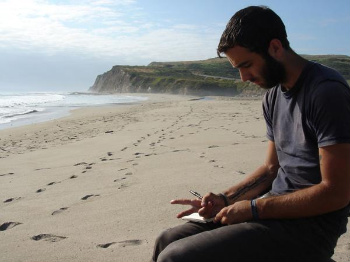

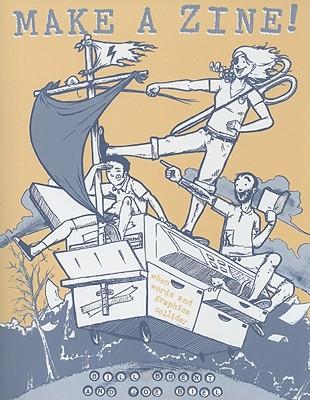

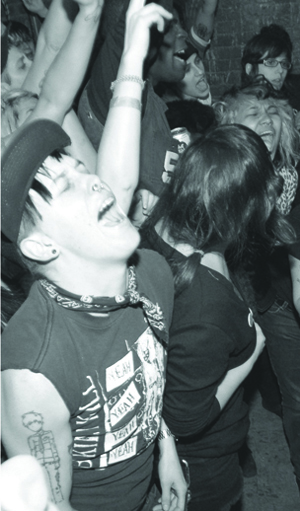 Deadline: May 31st, 2010
Deadline: May 31st, 2010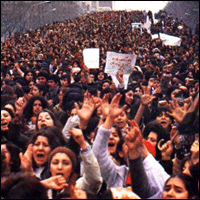 Today is the 99th annual
Today is the 99th annual 
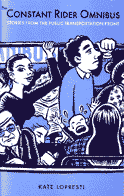
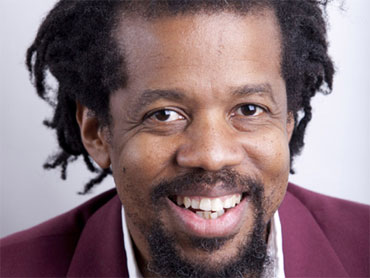 “Are you serious?!” That’s what I said when I first learned what happened to Don. The deep sense of bewilderment and disbelief I felt seemed to be shared by many. It was a tragedy in the true sense of the word.
“Are you serious?!” That’s what I said when I first learned what happened to Don. The deep sense of bewilderment and disbelief I felt seemed to be shared by many. It was a tragedy in the true sense of the word.
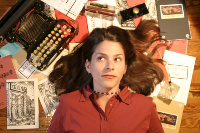
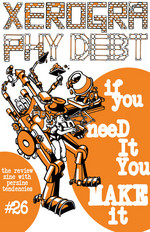
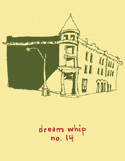 [Recording made by secret tape recorder in the Oval Office]. Nice place, Mr. President! And look at all these couches! Would you mind if I crashed on one tonight? [Inaudible]. Hah. I’m just kidding. Anyway, I know you’re busy, but I wonder if you’d like to check out my zine? [Inaudible]. Well, it’s sort of a book. [Inaudible]. Yes, I wrote it myself. [Inaudible]. Thanks, I try to write neatly. [Inaudible]. It’s mostly about wandering around and getting lost and feeling all the stuff you feel when you’re on the road. [Inaudible]. No, those aren’t kindergarten drawings. [Inaudible]. I drew them. [Inaudible]. Yes, I’m serious. [Tape ends].
[Recording made by secret tape recorder in the Oval Office]. Nice place, Mr. President! And look at all these couches! Would you mind if I crashed on one tonight? [Inaudible]. Hah. I’m just kidding. Anyway, I know you’re busy, but I wonder if you’d like to check out my zine? [Inaudible]. Well, it’s sort of a book. [Inaudible]. Yes, I wrote it myself. [Inaudible]. Thanks, I try to write neatly. [Inaudible]. It’s mostly about wandering around and getting lost and feeling all the stuff you feel when you’re on the road. [Inaudible]. No, those aren’t kindergarten drawings. [Inaudible]. I drew them. [Inaudible]. Yes, I’m serious. [Tape ends].